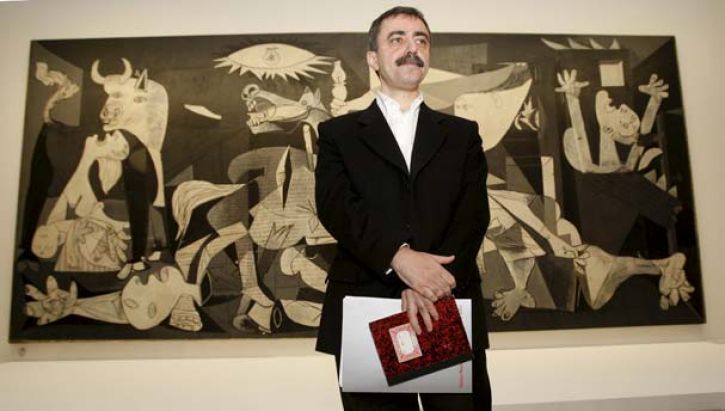by Sam Close

The truth is, everyone isn’t a great artist. Although we celebrate the democratic resonance of participatory, do-it-yourself culture, the lack of gatekeepers means we also suffer the onslaught of huge quantities of poorly crafted work. Middle school poetry teachers know what I mean. As someone who both studies and creates fan remix video, this might seem like an odd argument for me to make. Then I introduce my project to another wary colleague or bemused audience by saying, “No, no, these videos are BETTER than those ones you’ve seen on YouTube.” It’s true, but it also makes me question what I’m really championing.
As an academic trained in critical theory, I know all about the twisted and deeply repressive roots of institutional technique. Modern art that looks like so much kindergarten doodle or Microsoft paint reject, in fact, could be seen as fine artists themselves pointing out that Picasso’s Guernica adorning the walls of a Madrid museum is less a revolution than politically correct interior decorating. At the same time, the traditions and techniques of artistic production have been institutionalized and passed down through the ages not only because they serve institutional interest but because with them, you can draw a horse that looks like a horse.

Skeptics might see the recent boom in participatory culture as less a chance for the marginalized to finally gain an audience and more an extension of the participation ribbons that replaced championship trophies in their children’s weekend soccer leagues. Having only one team win is bad for the other teams’ self-esteem, well-meaning administrators argue—but from personal experience, that kind of attitude does not a varsity starter make.
And much of this criticism comes from those obligated to engage with the participatory poop: literary agents besieged in December by barely finished National Novel Writing Month drafts, fans who’ve had to read one too many Mary Sue fanfic, non-profit organizers concerned what supporters might post in their name. As Salon blogger Laura Miller argues, “the cultural spaces once dedicated to the selfless art of reading are being taken over by the narcissistic commerce of writing.”
So, what are we to do? Turn back the scribbling, remixing, ceramic-painting hordes at the gates of the internet? Not likely when even the institutional gatekeepers are being overrun, nor even desirable. Like criminals, do-it-yourself projects should be considered innocent until tried and proven awful. After all, Sara Gruen wrote the first draft of New York Times Bestseller Water for Elephants in National Novel Writing Month, and, whatever your opinion on Justin Bieber’s music, it has clearly brought much joy to many people.
Rather, we need to do two things. First, develop a healthier attitude towards critique. Throw away the model of the one-draft masterwork–any creative professional will tell you it’s a fantasy. Incorporate feedback and a serious revision process into our educational system so students can learn by doing the full creative process, frustrations and all. This is particularly important at a time when some argue computers can teach as well as human beings. When making something once doesn’t seem like such an unachievable, incredible, shocking and awing accomplishment, promiscuous participators will be less likely to assume anything they manage to finish must be immediately shared, since it might be genius. It’s not. Neither was the first cut of Star Wars.


Second, embrace the radical variability that exists in audiences’ artistic tastes. The artisanal do-it-yourself wares on the front page of Etsy have their following; so does whatever the heck it is you call the things posted on Regretsy. Any film student worth their salt will be irritated I mentioned popular favorite Star Wars instead of critical darling Citizen Kane at the end of the last paragraph. In school, encourage students to practice active, useful critique on both each other’s work and the canon. We embrace variability by exercising our rights as audience members to seek out what excites and inspires us, not what Rotten Tomatoes, the Nobel committee, or Box Office Mojo says we should enjoy. All perfect things are perfect in their own way, even if few things are perfect–and that includes DIY.

